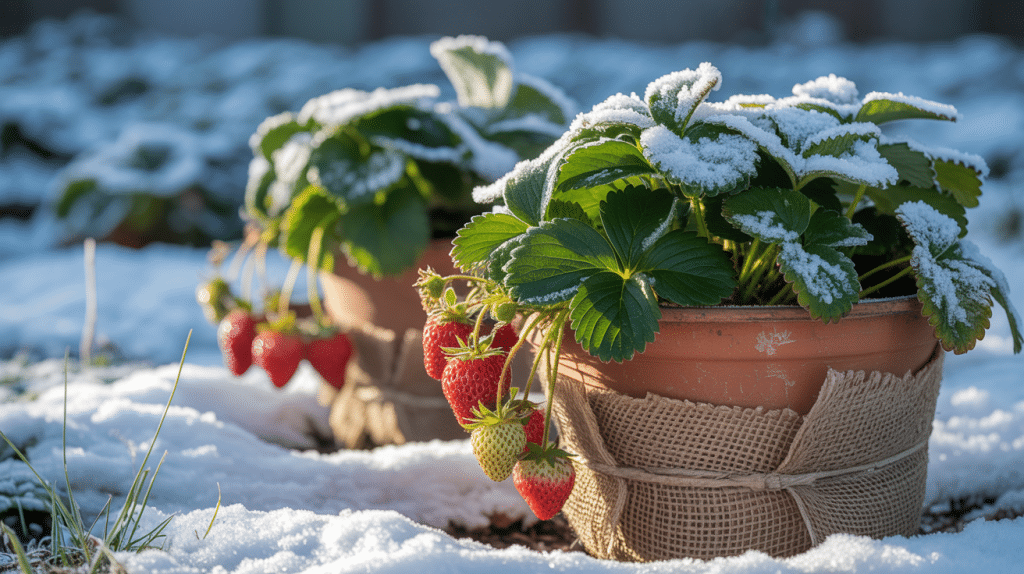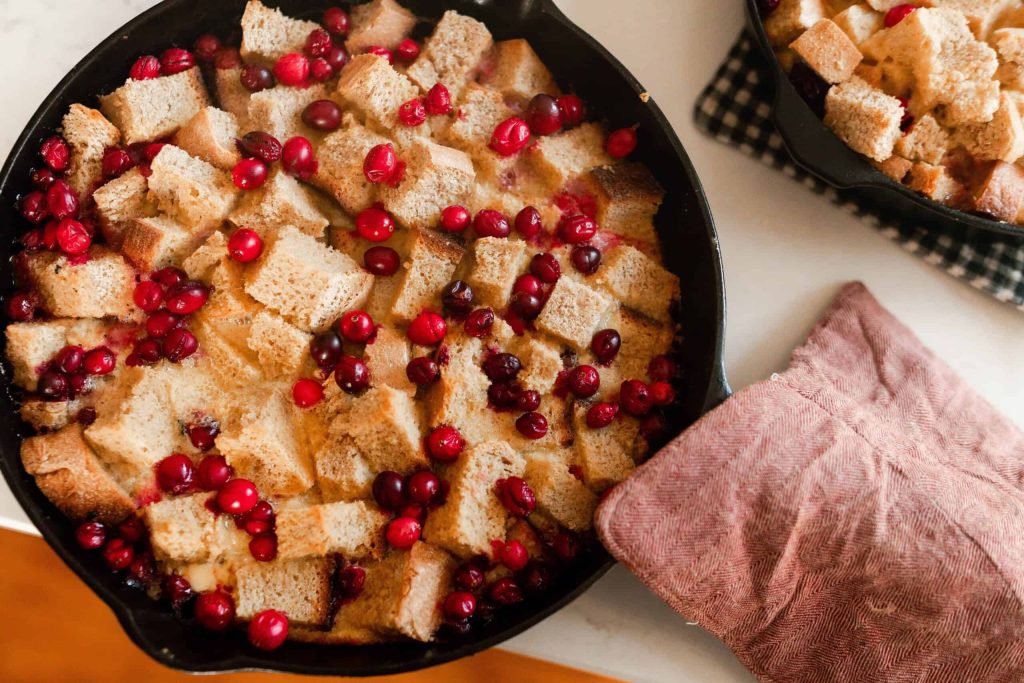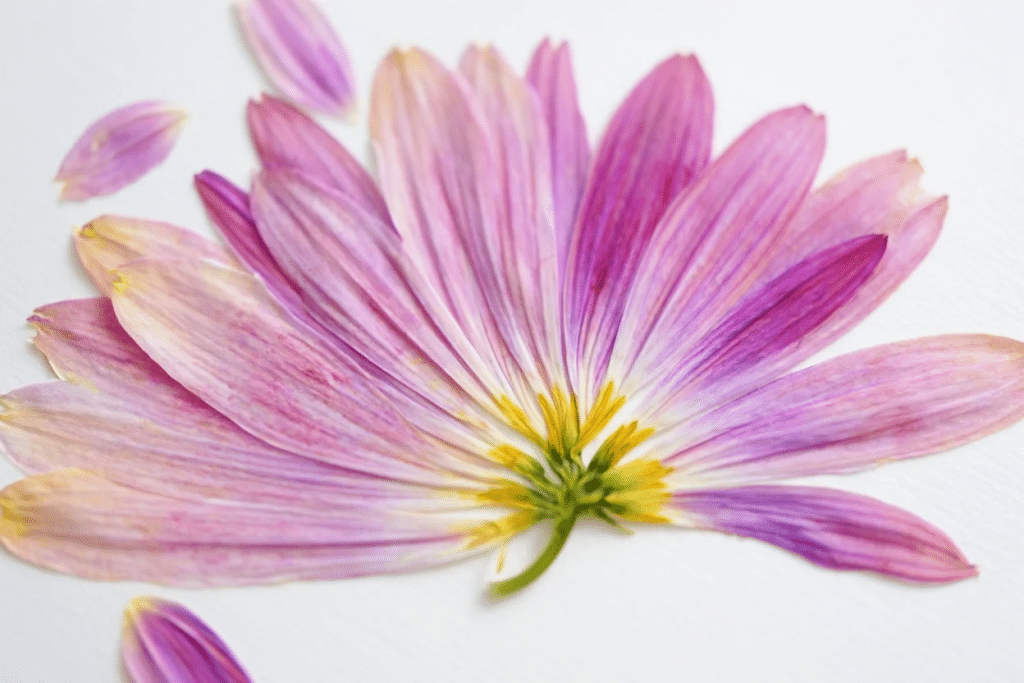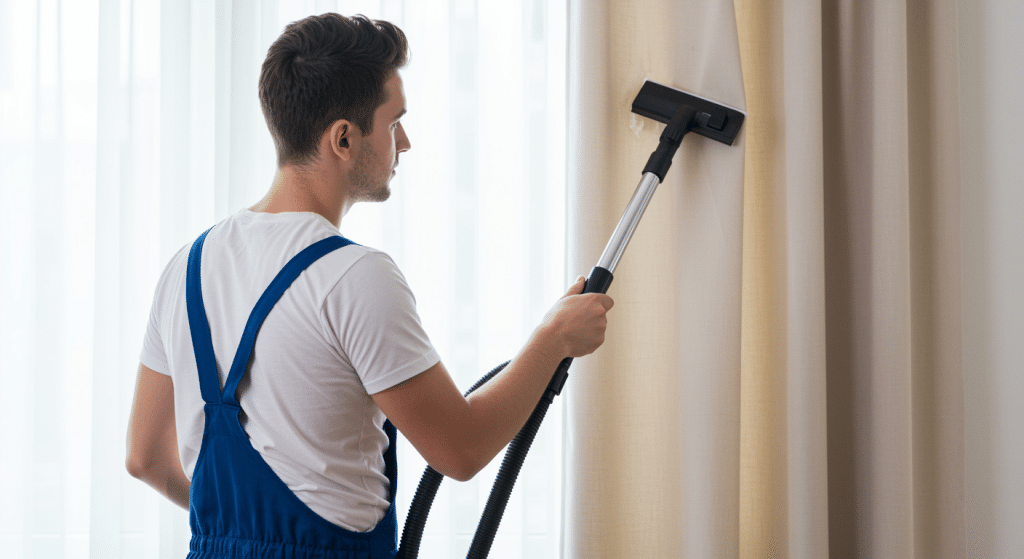Can Strawberry Plants Survive Winter in Pots? The Lowdown
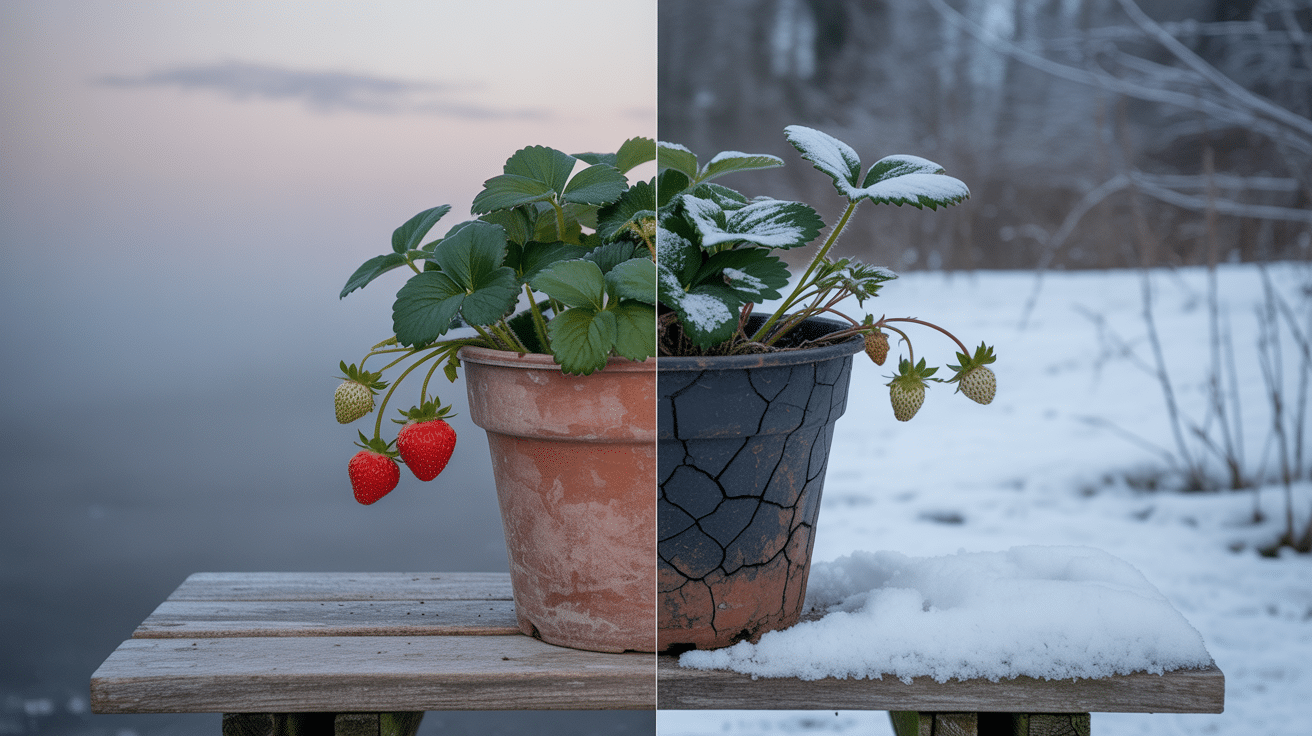
Yes, strawberry plants can survive winter in pots with proper care.
Potted plants face bigger risks than those in the ground since their roots get less protection from cold. The soil in containers freezes faster and deeper than garden soil. Plus, pots go through more freeze-thaw cycles that stress plant roots.
Can strawberry plants survive winter in pots?
It depends on your growing zone, pot size, and winter care routine. Plants in zones 5-9 have better chances with the right setup.
| Factors | Impact on Winter Survival |
|---|---|
| Pot Material | Clay pots crack in cold, plastic, and wood offer better insulation |
| Pot Size | Larger pots (12+ inches) provide more soil to insulate roots |
| Drainage | Good drainage prevents root rot during winter thaws |
| Plant Variety | June-bearing types handle cold better than day-neutral varieties |
| Plant Age | First-year plants survive better than older ones |
| Growing Zone | Plants in zones 7-9 need less protection than those in zones 3-6 |
| Exposure | Plants facing harsh winds or full sun in winter face more stress |
With these factors in mind, you’ll need a specific winter care plan for your potted berries.
Methods for Keeping Strawberry Plants Alive Through the Winters
These tested methods will shield your container strawberries from winter damage while setting them up for spring success:
Method 1: Move Pots to a Protected Location
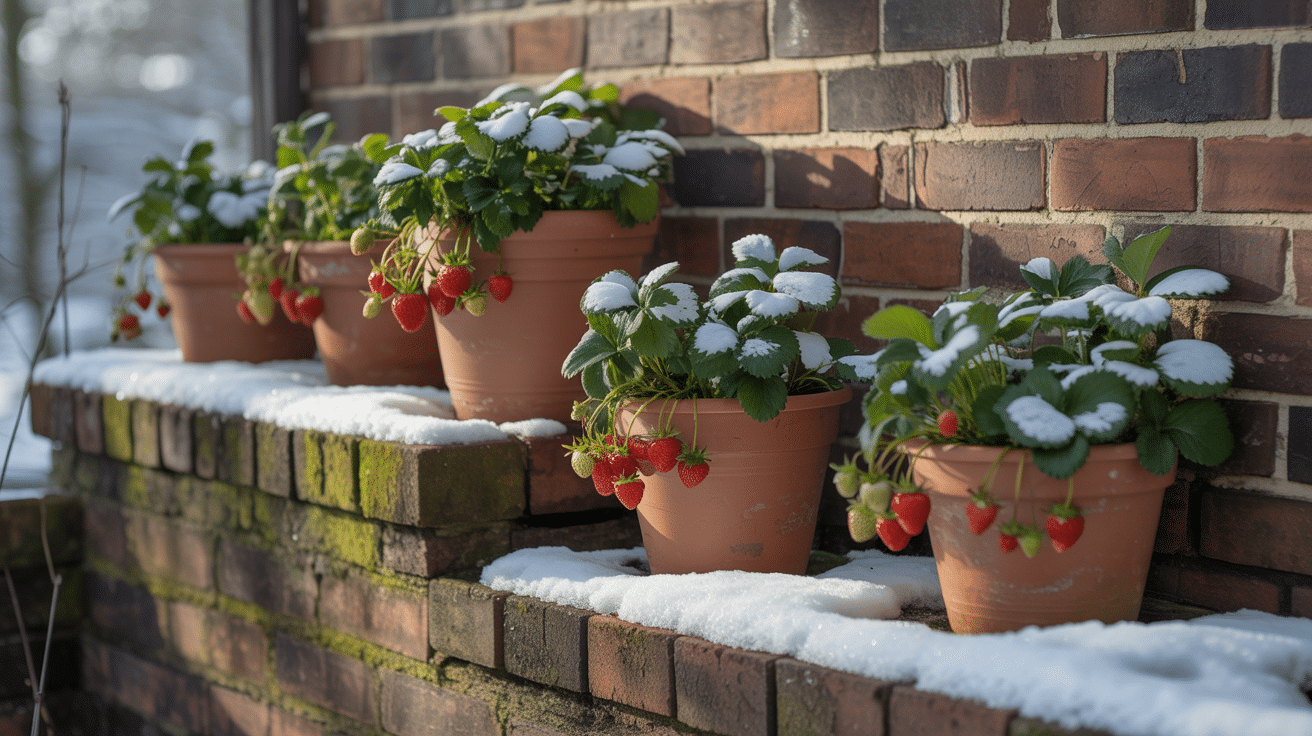
Moving your potted strawberry plants to a sheltered spot shields them from harsh winter elements. Choose a location that blocks bitter winds but still gets some sunlight during winter days.
Materials required: Gardening gloves, plant dolly or cart for heavy containers
Instructions:
- Place pots against a south-facing wall for additional warmth.
- Group containers together to create a microclimate.
- Keep pots raised above the ground on bricks or wood to improve drainage.
- Check plants weekly for signs of extreme drying or frost damage.
- Avoid locations where snow might slide off roofs onto plants.
Method 2: Insulate Container Sides
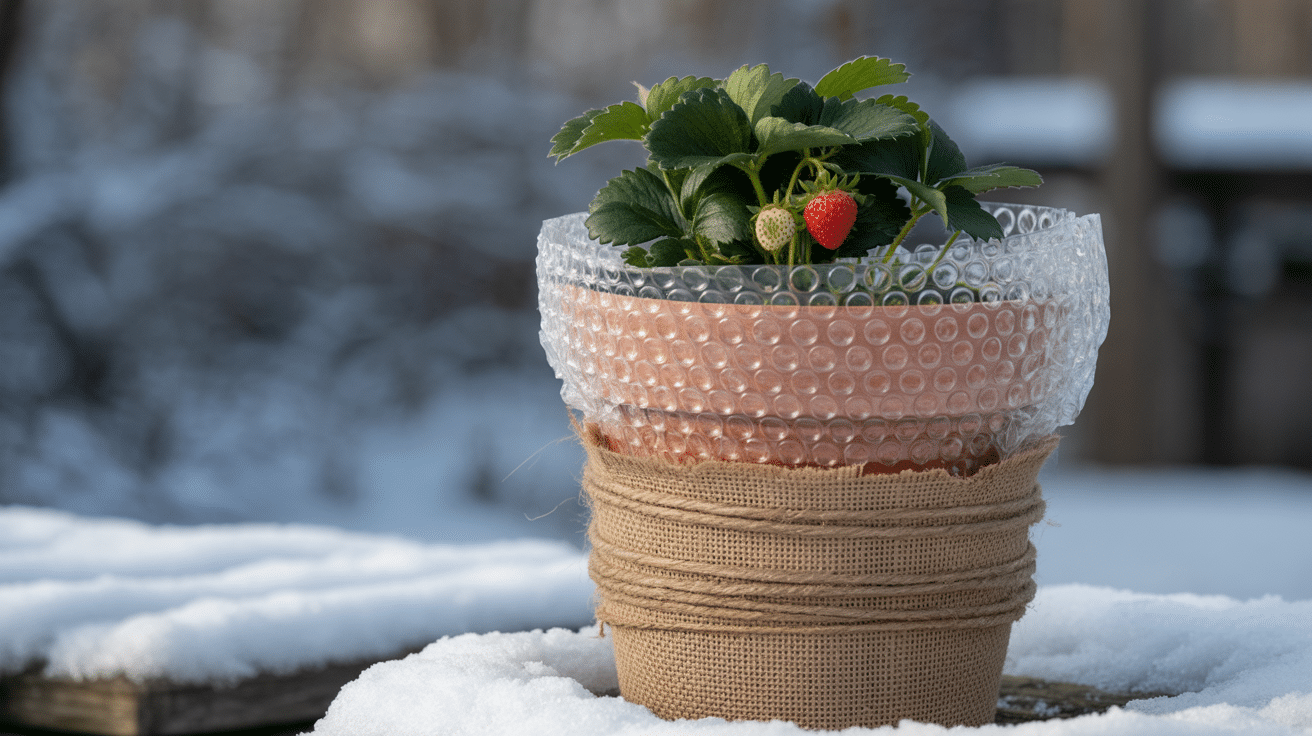
Insulating your containers provides crucial protection for strawberry roots. The sides of pots lose heat quickly, putting root systems at risk during temperature drops.
Materials required: Bubble wrap, burlap, old blankets, garden twine, or bungee cords.
Instructions:
- Clean the container sides of dirt and debris.
- Wrap bubble wrap or fabric around the entire pot.
- Secure wrapping with garden twine or bungee cords.
- Leave the top open for some air circulation.
- Add extra layers during severe cold snaps.
- Remove insulation during unexpected warm spells to prevent overheating.
Method 3: Apply a Thick Mulch Layer
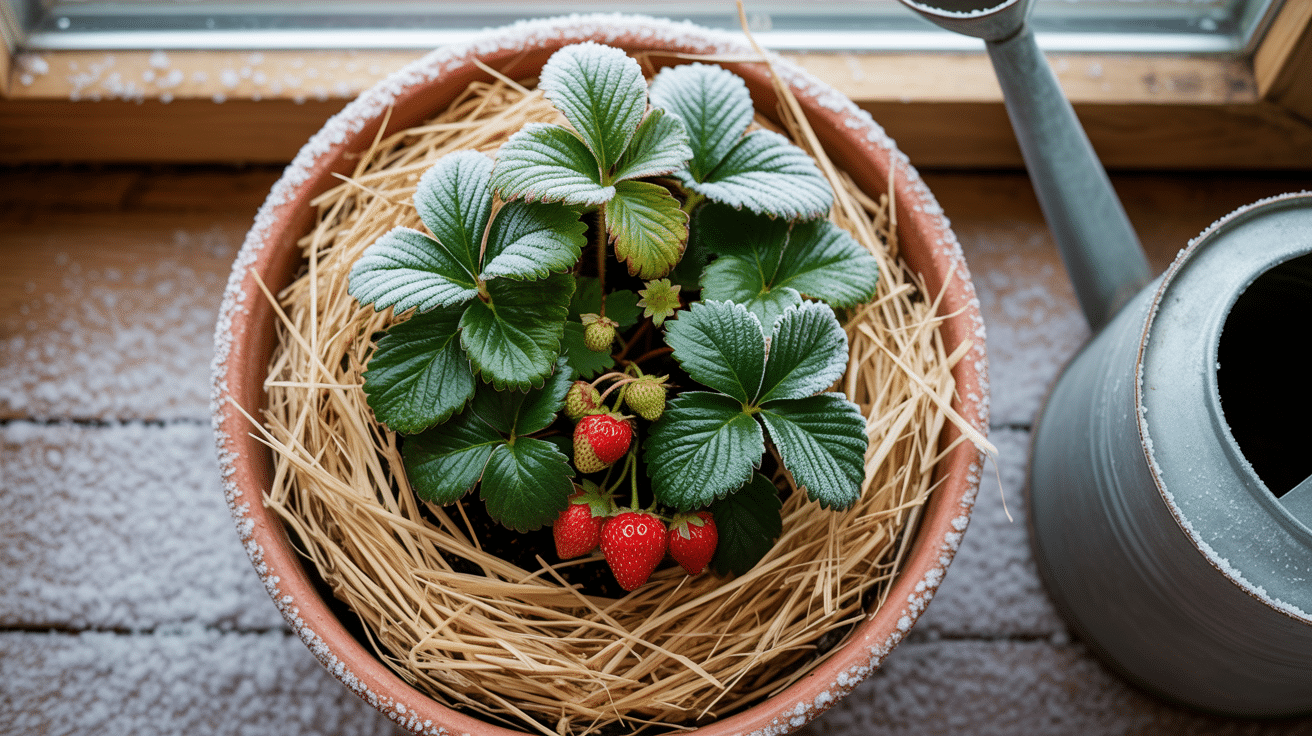
Adding mulch creates a protective blanket that regulates soil temperature and prevents rapid freezing and thawing cycles that damage roots.
Materials required: Straw, pine needles, shredded leaves, or commercial mulch
Instructions:
- Wait until after first hard frost to apply mulch.
- Spread 3-4 inches of mulch over soil surface.
- Keep mulch slightly away from plant crowns to prevent rot.
- Add more mulch midwinter if settling occurs.
- Remove most mulch gradually when spring temperatures stabilize.
Method 4: Water Strategically Before Freezing
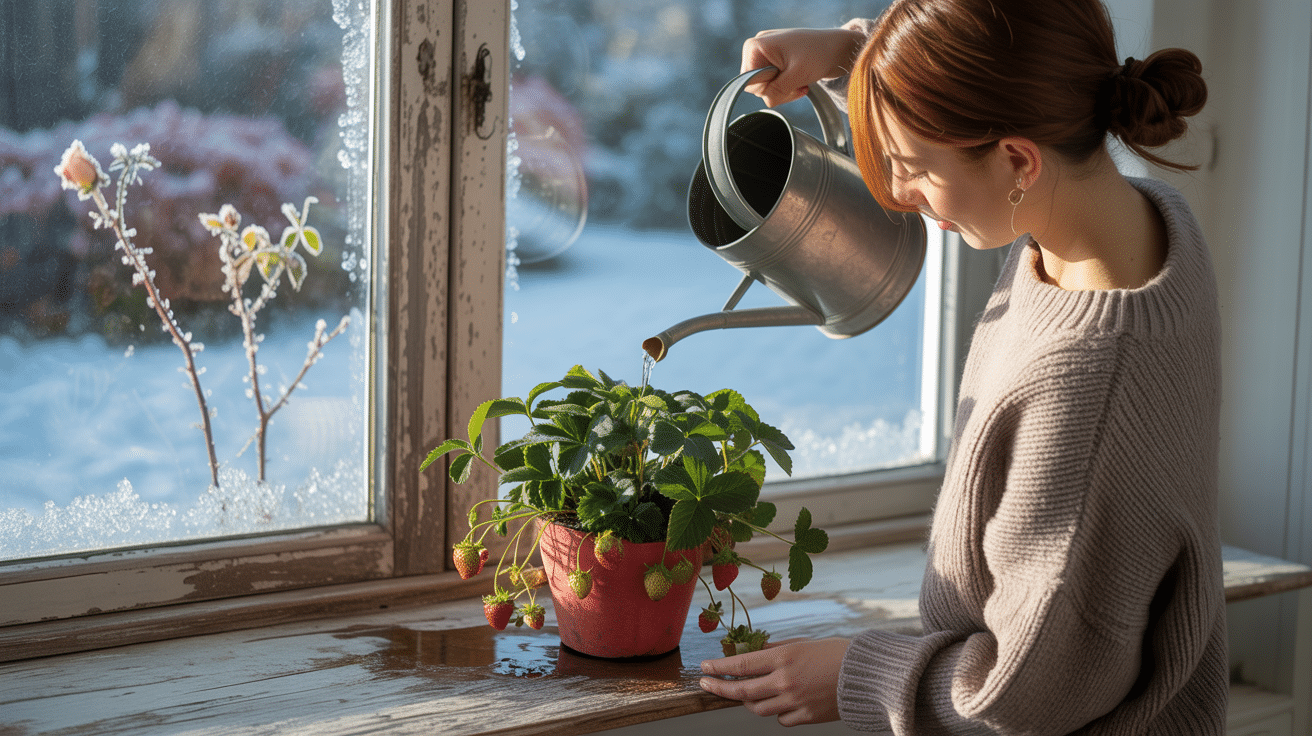
Proper watering before winter helps plants withstand cold stress. Moist soil holds heat better than dry soil and provides needed hydration through dormancy.
Materials required: Watering can or hose with gentle spray attachment
Instructions:
- Water thoroughly one day before expected freezing temperatures.
- Ensure the soil is moist but not soggy.
- Water during midday to allow excess moisture to drain.
- Stop regular watering once plants enter full dormancy.
- Check the soil monthly and water lightly if completely dry.
Method 5: Create Mini Greenhouses
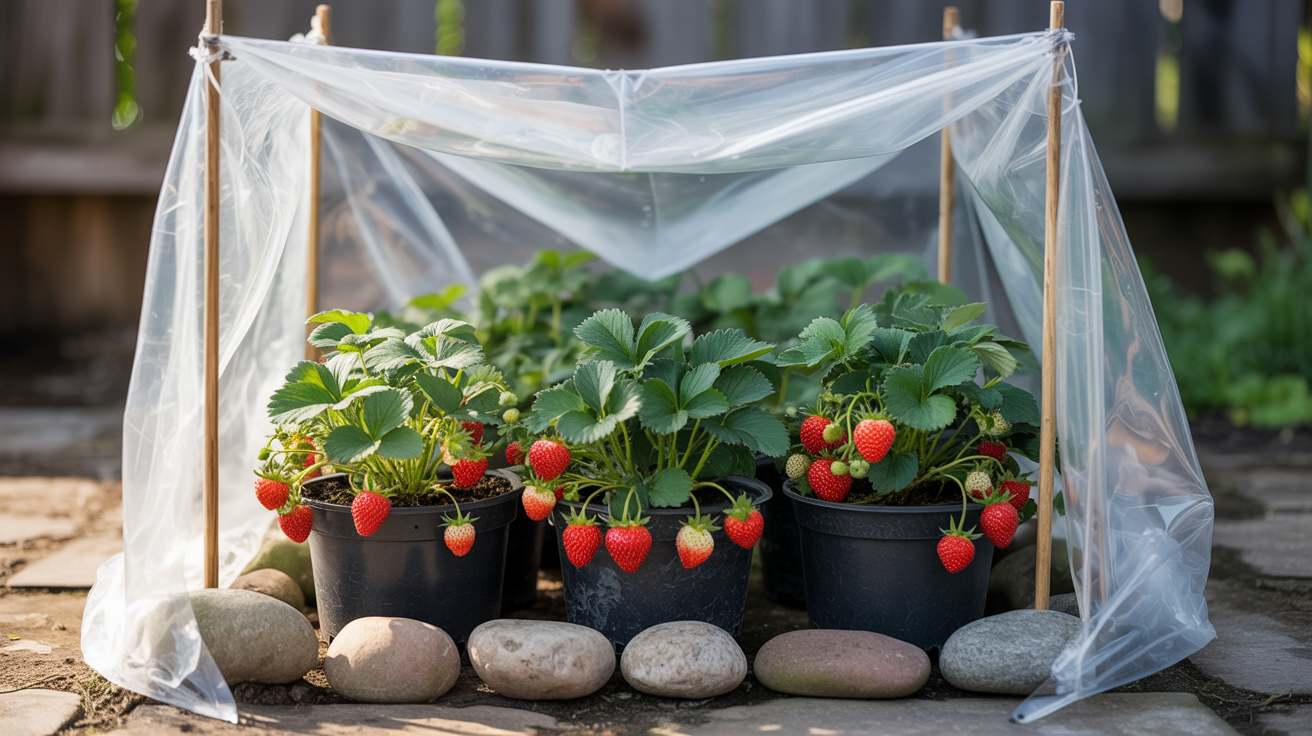
Converting pots into mini greenhouses maintains more stable temperatures. This method works especially well for smaller container groupings.
Materials required: Clear plastic sheeting or large clear plastic bags, garden stakes
Instructions:
- Insert stakes around pot edges to create a frame.
- Drape clear plastic over stakes, creating a tent.
- Secure the plastic at the base with rocks or bricks.
- Leave small openings for ventilation on warmer days.
- Remove the covering during days above freezing to prevent heat buildup.
Method 6: Create Root Cellar Storage
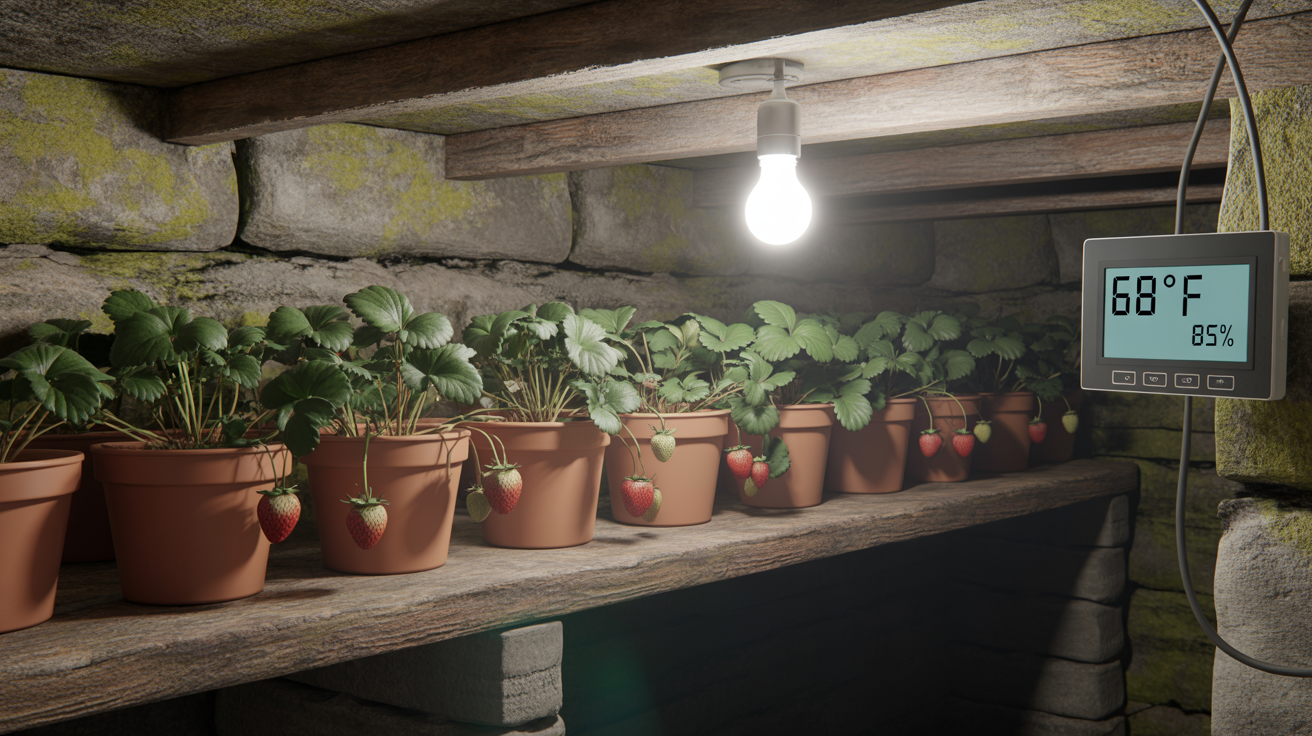
Traditional root cellars offer ideal conditions for overwintering potted strawberries in very cold regions. The stable, cool temperatures prevent damage.
Materials required: Root cellar or similar space, storage shelves, humidity monitor
Instructions:
- Clean pots of excess soil and trim dead foliage.
- Place containers on shelves with good air circulation.
- Maintain temperatures between 30-40°F for proper dormancy.
- Check humidity levels weekly, aiming for 80-90%.
- Inspect plants monthly for mold or pest issues.
- Begin hardening off plants two weeks before outdoor return.
With these six protection methods, your strawberry plants can survive winter in pots.
Winter Revival: Bringing Strawberry Plants Back
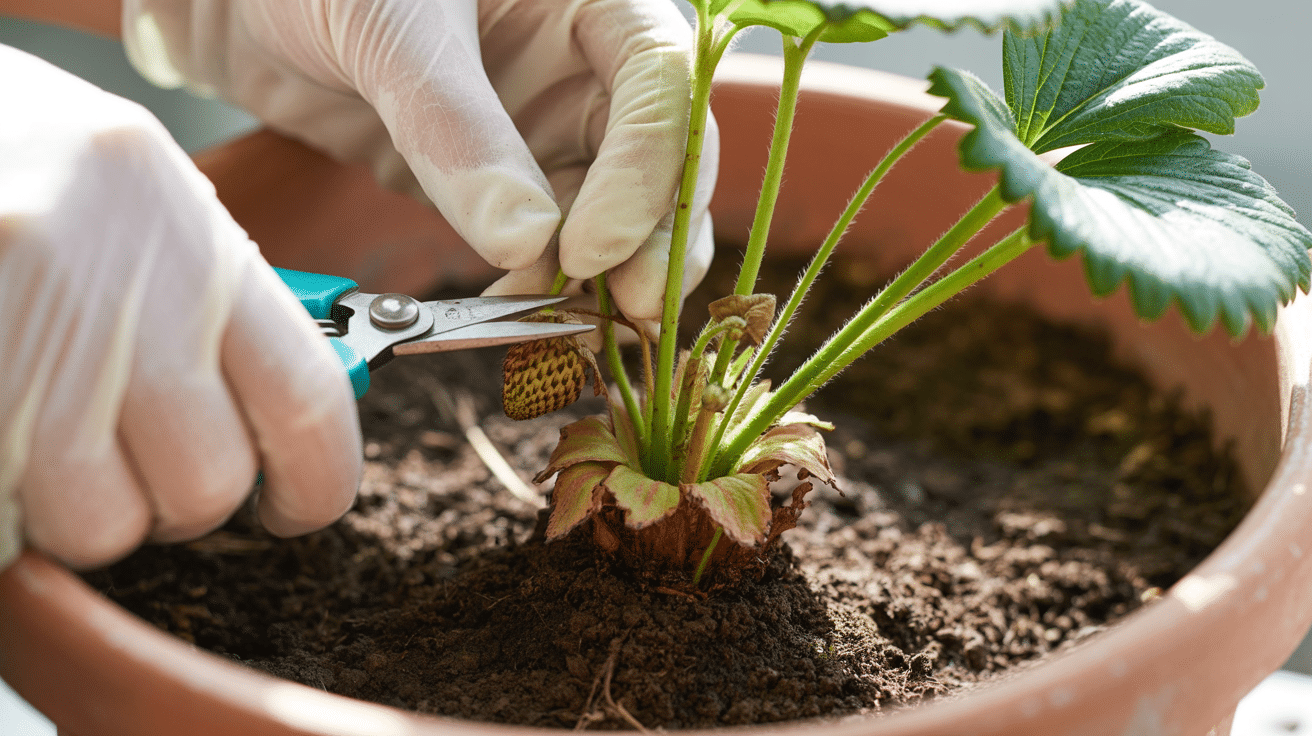
Even with the best winter care, some potted strawberry plants may show signs of stress come spring. Here’s how I evaluate their condition and nurse struggling plants back to health:
1. Check for signs of life
Before assuming a plant is dead, examine the crown (the part where stems meet roots). Healthy crowns should be firm and white or light green inside. Gently scrape the crown with your fingernail – green tissue means the plant is alive.
2. Prune away dead foliage carefully
Remove brown, black, or mushy leaves and stems with clean, sharp scissors. Cut back to healthy green tissue, being careful not to damage the crown. This prevents disease and encourages new growth.
3. Assess root health thoroughly
Gently remove the plant from its pot and inspect the roots. Healthy roots are white or light tan and firm. Black, mushy, or foul-smelling roots indicate rot. Trim away damaged roots with clean scissors.
4. Repot with fresh soil mix
Use new potting mix specifically for berries or vegetables. The fresh soil provides nutrients and eliminates any fungal issues that may have developed over winter. Ensure the container has good drainage holes.
5. Begin watering gradually
Resume watering slowly, keeping the soil just barely moist for the first two weeks. Overwatering stressed plants can cause additional problems. Increase watering as you see new growth appearing.
6. Hold off on fertilizing immediately
Wait until you see new leaf growth before applying fertilizer. Start with half-strength balanced fertilizer (10-10-10), then move to regular strength after 2-3 weeks of active growth.
Can strawberry plants survive winter in pots? Yes, and even those showing winter damage can often bounce back with these revival techniques and a bit of patience.
The Bottom Line
Can strawberry plants survive winter in pots? With proper protection – yes!
Using mulch, insulation, and finding the right storage spot gives your plants the best chance. Even if you notice some damage in spring, my revival tips can help bring them back to life.
What winter protection methods have worked best for your potted strawberries? S
hare your success stories or questions in the comments below.
Frequently Asked Questions
Do Potted Strawberry Plants Come Back Every Year?
Yes, strawberry plants are perennials that return yearly when protected from extreme cold. Container plants need extra winter care to ensure root survival.
At What Temperature Do You Need to Cover Strawberries?
Cover strawberry plants when temperatures drop below 32°F (0°C). Plants can handle light frost but need protection during hard freezes below 28°F (-2°C).
What Is the Best Container to Grow Strawberries In?
Wide, shallow containers (12-18 inches diameter, 8 inches deep) with many drainage holes work best. Plastic or wooden pots provide better insulation than clay.
What Is the Lifespan of A Strawberry Plant?
Strawberry plants typically live 3-4 years with proper care. Production peaks in year 2-3, then declines. Container plants may have shorter lifespans without regular renewal.


